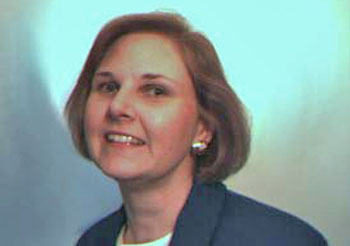The ABCs of Economics and Health Care
 |
Diane Dewar's new book Essentials of Health Economics has wide appeal for students of public health. |
In a time when people without insurance can slip on the ice and get a $35,000 bill for back surgery, the economics of health care is a popular topic.
School of Public Health Associate Professor and UAlbany alumna Diane Dewar has written a new book, Essentials of Health Economics (Jones and Bartlett), that takes a complex subject and breaks it down to the basics.
"This book has wide appeal among students of public health and health administration, since it conveys the essence of the economic issues at hand while avoiding complicated methodological issues that would interest only students of economics," she said.
Dewar joined the faculty of UAlbany's School of Public Health in 1994. She has a strong background in the health economies of the U.S. and Canada. A faculty member in the Department of Health Policy, Management and Behavior, she teaches health economics and economic evaluation methods to graduate students and a health policy course to undergraduates.
"Students have many opportunities to work with me on contract and grant-funded research projects that include economic evaluations of primary care interventions, technology diffusion, and long-term care organizational changes," she said. Technology diffusion is the broad use of medical technology in the health care organizations.
 |
School of Public Health Associate Professor Diane Dewar has long been interested in disparities in access to quality health care. |
Dewar's book is an overview of the main health economic issues and methods, with an eye on the link between economic methods and public health policy. "Readers will learn the specifics of the health care markets and then learn about evaluation of the health care services delivered, and health care reform," she said.
Dewar has long been interested in disparities in access to quality health care. As a result, her research focuses on the influence of health policy on health insurance coverage and access to services among the poor, the elderly, and the chronically ill.
For example, in the U.S., people with a chronic disease like arteriosclerosis may pay up to $500 a month out of pocket for medication unless they have good health insurance. Many go without the medication entirely or try to skip doses or reduce their dosage to save money.
Many of the tough questions in health care surround incentives to control costs while maintaining or improving quality of care. In chapters on the hospital market, comparative health care systems, and health care reforms, she develops arguments for cost control and improving service delivery in light of what can be learned from other systems and past reform debates.
![]() For more news, subscribe to UAlbany's RSS headline feeds
For more news, subscribe to UAlbany's RSS headline feeds


